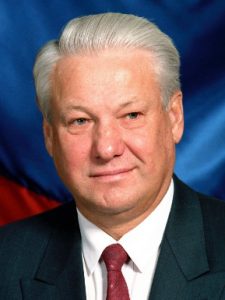The danger of nuclear war was significantly reduced by the end of the Cold War, but the continued presence of nuclear weapons meant that it could not be eliminated completely. In 1995, Russian officials briefly misinterpreted a Norwegian scientific rocket to be a nuclear attack.
The Andoya Rocket Range
In December 1994, Norwegian scientists from the Andoya Rocket Range were planning for a collaborative venture with the United States. They were going to launch a four-stage scientific rocket, complete with NASA-tested, military grade boosters, to study the Northern Lights. Although the Norwegian scientists had launched 607 scientific rockets since 1962, their Black Brant XII was much bigger than rockets from previous tests and was roughly the same size as the Trident II, an American submarine-launched nuclear missile. As CIA official Peter Pry explained, the Norwegian rocket “resembled a U.S. submarine-launched, multiple-stage ballistic missile.”
On December 21, as they always did before a rocket launch, the scientists instructed the Norwegian Foreign Ministry to notify neighboring countries of the “international scientific rocket campaign.” Their notice listed a planned launch date between January 15 and February 10, 1995. Most likely because of a bureaucratic error, however, the message never reached officials in the Russian Federation. Radar crews from the Russian Missile Attack Warning System (MAWS) —always on the lookout for a possible nuclear strike—were likewise not informed. The MAWS crew had a grueling task to begin with, working long hours on a task of the utmost importance which required constant focus. As Russian journalist Oleg Falichev explained: “At times, the officers who perform alert duty are so exhausted at the end of a shift that they don’t feel either their hands or their feet” (Pry 219).
The Launch
 On January 25, 1995, the Black Brant XII blasted off from Andoya Island in northern Norway. Its target altitude of 1,500 kilometers could have theoretically carried it into Russia. “An officer on duty reported detecting a ballistic missile which started from the Norwegian territory,” recalled MAWS General Anatoly Sokolov. “If it had been launched on an optimal trajectory, its range would have been extended to 3,500 kilometers which, in fact, is the distance to Moscow. The thing is, the start of a civilian missile and a nuclear missile, especially at the initial stage of the flight trajectory, look practically the same.”
On January 25, 1995, the Black Brant XII blasted off from Andoya Island in northern Norway. Its target altitude of 1,500 kilometers could have theoretically carried it into Russia. “An officer on duty reported detecting a ballistic missile which started from the Norwegian territory,” recalled MAWS General Anatoly Sokolov. “If it had been launched on an optimal trajectory, its range would have been extended to 3,500 kilometers which, in fact, is the distance to Moscow. The thing is, the start of a civilian missile and a nuclear missile, especially at the initial stage of the flight trajectory, look practically the same.”
The radar crew had no choice but to report what could have been an incoming missile to Moscow. According to MAWS expert Nikolay Devyanin, “There was not time to ask their superiors for advice, but they did not want to become scapegoats for another [Matthias] Rust [the German teenager who in 1987 flew past Russian defenses and landed in Red Square]. In this situation the duty officers made the sole possible decision: to work according to plan, as prescribed by instructions, and as has been practiced dozens of times in drill sessions” (Pry 223).
Within minutes, President Boris Yeltsin was in possession of the nuclear briefcase, known as the “cheget,” while Russian nuclear forces were placed on high alert. Fortunately, despite the dilapidated state of Russia’s nuclear facilities at the time, early warning satellites still provided 24-hour coverage of any potential American intercontinental ballistic missiles (ICBMs). The exact sequence of events remains unknown, but Yeltsin was most likely able to see via the cheget that a full scale nuclear attack was not underway.
Aftermath
The next day, Yeltsin announced to the press that he had activated the cheget. “I have indeed used yesterday for the first time my ‘little black case’ with a button that is always with me,” said Yeltsin. “I immediately contacted the Defense Ministry and all the military commanders that I require and we were following the path of this missile from beginning to end” (Pry 229). It remains the only known incident when a Russian leader activated the nuclear briefcase. In 1996, CIA director R. James Woolsey testified to Congress that the incident had caused “some sort of alert, not a full strategic alert, but, at least, a greater degree of strategic inquisitiveness.”
The Norwegian rocket incident showed the dangers of accidental nuclear war even when the threat of military confrontation between the United States and Russia was at an all-time low. As former Russian General Vladimir Belous noted, “A fateful accident could plunge the world into the chaos of a thermonuclear catastrophe, contrary to political leaders’ wishes.”





